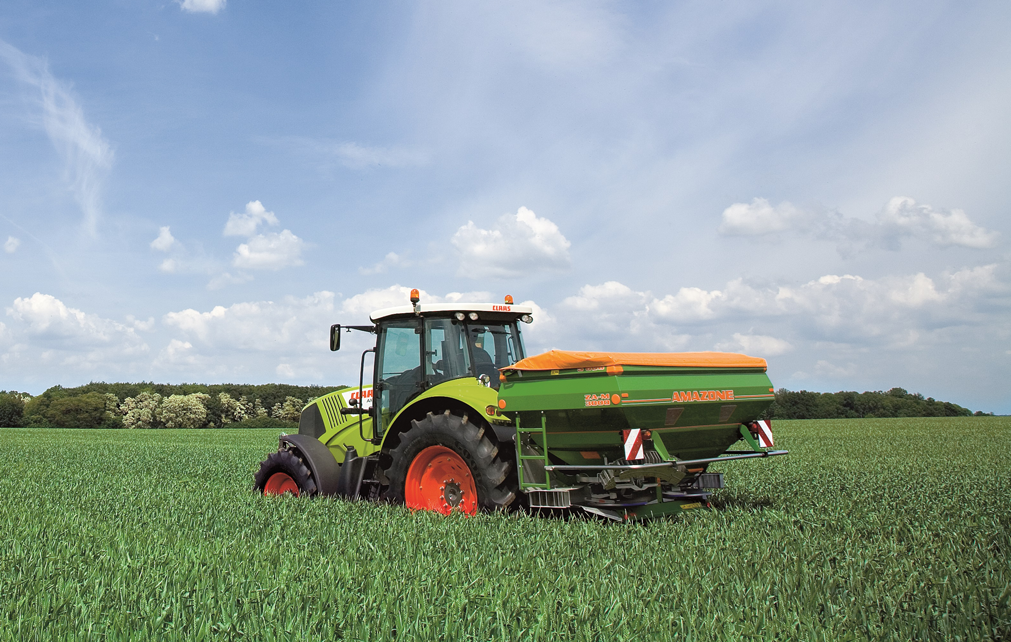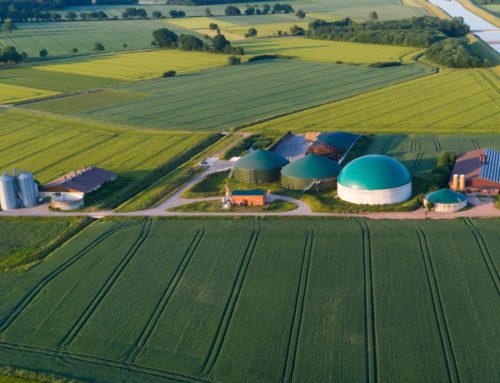Fertilisation according to plan
The end of one harvest is the beginning of another. After all, the next crop is already in the ground by autumn. The main challenge that they face is reintroducing the extracted nutrients into the soil to ensure optimal growing conditions. In our article “Accurately adjusting soil nutrients”, we discussed soil parameters and the consequences they have on fertilisation in detail.
Before targeted fertilisation can be carried out, a thorough investigation into the nutrient requirements must be undertaken as a priority. There are several partially complementary ways of achieving this. Field and pot experiments, chemical crop analyses and deficiency symptom diagnoses provide initial indications of the type and extent of fertilisation required. These methods look at the properties of the crops, their chemical composition and the factors influencing their health. Deficiency symptoms indicate an insufficient supply of nutrients to the crops.
Soil testing provides even more precise information about the state of supply in arable fields. For chemical analysis, samples are usually taken from the topsoil up to a depth of 60 centimetres, after the preceding main crop has been harvested in autumn or spring. However, there should also be a gap of at least six weeks between sampling and the last pass of tillage or fertilisation. On larger areas with heterogeneous sections, the fields must be split into yield zones. The precision farming sector has produced a range of digital tools to help identify these sections. The Crop View component from 365FarmNet also enables the yield potential of crops to be determined. The component uses historic satellite data to analyse crops from multiple years. The results can then be used to create a sampling plan. Multiple individual samples are taken from the field sections and combined to make mixed samples for laboratory analysis. Extraction processes in combination with different solvents then determine the available nutrients and the pH value of the soil. If the soil contains a high proportion of organic matter, the nutrient contents are given per volume unit of soil. As such, the volumetric weight (or bulk density) of the soil must also be calculated. All this information can help to improve the correlation between the soil tests and the actual nutrient supply as the root penetration can be taken into account.
Fertilisation balancing
Proper fertilisation according to good professional practice should provide crops with all the nutrients they need. At the same time, excessive fertiliser doses and the associated soil, water and air pollution caused by nutrient losses should be avoided. To determine the fertilisation requirement, the fertiliser composition, nutrient extraction by the plants, targeted yields, soil reserves, replenishment potential and nutrient inputs must all be taken into account. Industrially manufactured fertilisers come with precise information about their composition. This enables the quantity of distributed elements to be precisely determined. For organic fertilisers produced on a farm, the nutrient concentrations are examined in a laboratory. The nutrient reserves and potential of the soil and the level of nutrient extraction by the crops are also analysed in a laboratory using the methods mentioned. Nutrient inputs are mostly provided by means of organic and inorganic fertilisation, which is carried out within the strict limitations of applicable fertiliser regulations, such as the German Fertiliser Application Ordinance.
A range of software solutions are available to help with fertilisation management. They determine the deadlines, boundaries and exceptions for specific farms, bringing structure and simplicity to fertilisation measures. One example is the DELOS Nutrient Management component from 365FarmNet. It contains all the latest regulations from the individual federal states in Germany to enable fertiliser requirements to be calculated reliably and precisely.
Inputs that enter the soil through wet and dry deposition are also important for maintaining the nutrient balance during fertilisation.. In the case of wet deposition, substances that are dissolved in rain or mist accumulate in the soil. This type of input can be determined by collecting precipitation in special bulk collection tanks. Experts refer to dry deposition when solid or gaseous particles that are present in the air and deposited in the soil. The larger the field surface the substance has to settle on, the higher the level of deposition. Therefore, the values detected on vegetated areas are higher than those on unvegetated arable land. Both effects differ in their localised manifestation. In this context, high nitrogen inputs commonly occur in areas with large cattle populations and their associated NH³ emissions. Likewise, higher levels of sulphur are often found in crops growing near industrial or urban areas. In areas neighbouring bodies of saltwater, higher concentrations of sodium and magnesium are often detected in the soil. These correlations must be considered during the fertilisation in order to avoid any oversupply of the areas.
Significant nutrient outputs mainly occur as a result of nutrient extraction by crops and field clearing after harvest. The level of nutrients extracted by crops depends on the crop type, variety and yield. Any crop residues remaining in the field are classed as nutrient inputs and must be suitably accounted for during fertilisation. Further nutrient losses result from surface runoff, particularly on highly compacted field sections. However, nutrients are not only lost via the surface, but also as a result of runoff in intermediate and groundwater, or via drains. These nutrient outputs depend on the type and structure of the soil. Gaseous losses, particularly of nitrogen compounds, must also be taken into account for fertilisation.

Important nutrients for fertilisation
For effective fertilisation, all the required nutrients must be harmonised. The limiting factor here is the element that is least present in the soil solution (Liebig’s law of the minimum). The main nutrient elements include – in decreasing order of occurrence in plant matter – nitrogen, potassium, calcium, magnesium, phosphorus and sulphur. In addition, silicon and sodium are also important for certain crop species.
In terms of quantity, nitrogen is the most commonly occurring. As such, it is one of the core elements of crop nutrition and an important building block for microorganisms. It is also a component of many organic compounds, such as amino acids, vitamins and chlorophyll. As is only rarely found in parent rock and mineral soil matter, nitrogen has to be added to arable land via suitable fertilisers. The nitrogen supply of crops is frequently a yield-limiting factor. As such, an adequate dose usually results in a high yield.
Potassium is responsible for the osmotic pressure in crops and therefore for regulating the water balance. Similar to magnesium, it is also necessary for the activation of certain enzymes. A good supply of potassium increases drought and frost resistance. A deficiency, on the other hand, can cause increased leaf wilt, particularly around the edges of the leaves. This in turn can cause chlorosis and necrosis in crops.
Phosphorus is present in the Earth’s crust and is an important element for all living things. As part of the food chain, it makes its way via the soil to plants, animals and ultimately humans. Phosphorus is responsible for supplying cells with energy (ADP, ATP synthesis), and is used as a cell building block and in the formation of organic substances. A lack of phosphorus in soil has a negative effect on crop growth, particularly in the form of deficiency symptoms such as necrosis and chlorosis.
Sulphur is a component of many plant constituents, such as amino acids, enzymes and vitamins. A lack of sulphur disrupts the synthesis of protein and chlorophyll, which causes yellowing, initially in young leaves then later all leaves. In rapeseed, a sulphur deficiency can result in a complete yield loss. A sufficient sulphur supply is therefore incredibly important for the production of high-quality food.
Press contact
Yasmin Moehring
Tel. +49 30 25 93 29–901
Mobil +49 151 17 28 18 69
moehring@365farmnet.com



